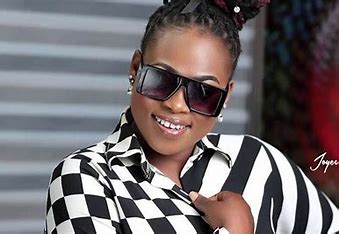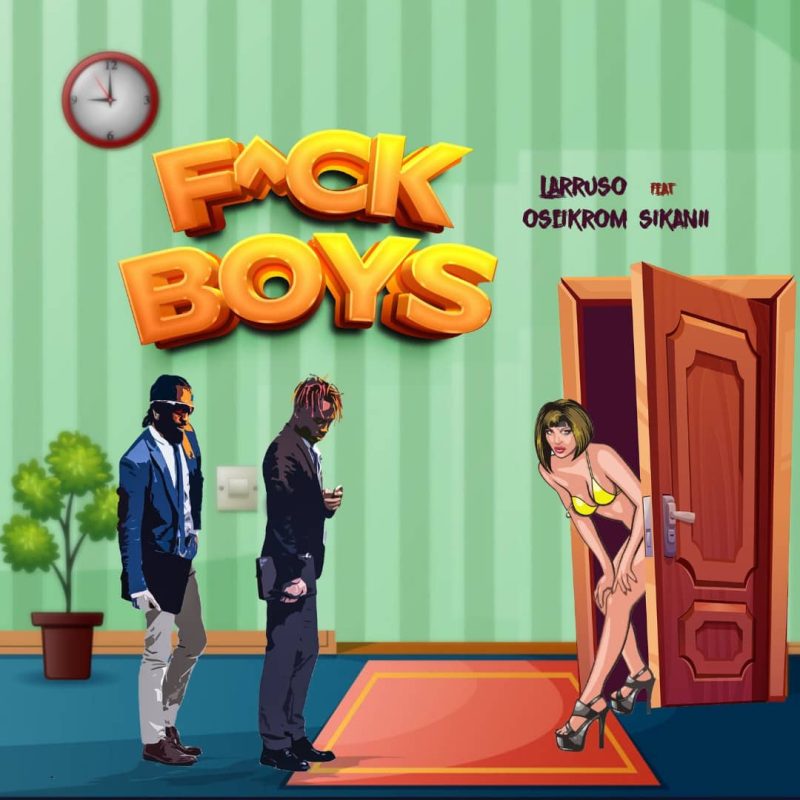How stylists for Olivia Rodrigo & Michelle Zauner create alt-pop looks
Written by ABR on 02/02/2023
The camera opens on Olivia Rodrigo perched on a chair in a high school cafeteria. She’s wearing a preppy cable knit sweater and a string of pearls. And she’s being surveilled. From there, the popstar’s “good 4 u” video, along with its wardrobe, becomes increasingly deranged. After cheerleading practice, Olivia swings by the gas station to pick up a red jerry can of gasoline, slipping the cashier her purchase with a leather-gloved hand. In a CCTV close-up, we see that her pearl earrings are inscribed, ‘help’. In her bedroom, curtains ablaze, she’s having a full Disney knees breakdown in Jiwinaia chains. And as night falls, she trudges through a forest in pitch-black combat boots only to find herself in the middle of a lake. “Good for you, I guess you moved on pretty easily,” she smirks, her eyes flashing a demonic red before she plunges into the water’s depths.
“good 4 u” is only one of the many incendiary kiss-off anthems that make up Sour, Olivia’s explosive debut and the album that propelled pop-punk, and its accoutrements, back into the cultural consciousness. Of course, female artists were fronting pop-punk outfits and penning guitar riffs long before Olivia. We can’t speak to today’s crop of alt-popstars without a heavy nod to the trailblazing women who came before them; the women who carved out a space for themselves within a musical genre notorious for belittling them; and who addressed (and subverted) its misogyny through music and wardrobe. Think Courtney Love and the kinderwhore look. All babydoll dresses and Mary Janes, the Hole frontwoman’s style was “ironically genius, […] a perverted and sexy subversion of the classic ‘girl’ archetype, […and] questioning the cultural importance of typical beauty through costume and the stage”. Or Avril Lavigne and her signature neckties, (‘borrowed-from-the-boys’, as the annals of fashion might have once described them). Then there’s Kim Gordon in X-Girl’s “sexy tomboy” tees or Karen O in tattered prom dresses.
Like the alternative musicians of yore, today’s alt-pop stylists are creating looks that question and celebrate the many facets of femininity, playing with its codes and conventions, and amplifying or flipping them for subversive effect. Of these stylists, there’s sister duo Chloe and Chenelle, who have revived the pop-punk look for the TikTok generation through their work with Olivia Rodrigo and Willow Smith. There’s also Ron Hartleben, who dressed alt-pop icon Sky Ferreira for her highly-anticipated comeback, and Cece Liu, who whipped up the sweet, frothy confections that defined Michelle Zauner’s Jubilee era.
If “driver’s license” catapulted Olivia to international stardom, then follow-up singles “good 4 u” and “brutal” established the singer as pop-punk’s second coming — and not just musically. The singer, along with Willow, also ushered the genre’s unmistakable look into the 2020s with a little help from Chloe and Chenelle. And it seems it was a feat the stylist duo had been preparing for since they were teenagers themselves. “I grew up shopping at Claire’s,” Chenelle says of the accessories outlet that outfitted teen subcultures — from the goths to the punks — through the 00s and beyond. These mall-rat sensibilities are especially apparent in Willow’s “Transparent Soul” video, the singer wearing a pair of Tripp pants and a massive spiked collar likely swiped from the racks of a local Hot Topic.
With Olivia, the duo elevated the look and its trappings (“fishnets, Docs, platforms, creepers, chains, belts…” Chenelle lists) to 2020 standards. Corsets replaced the graphic T-shirts or striped singlets of yore. Pop-punk’s iconic black-and-pink colour combo made a reappearance, this time on diamanté bustiers and Fancì Club micro sets. For the red carpet, the duo frequently pulled looks from Vivenne Westwood and Saint Laurent; both labels with their own ties to alternative music and whose attire immediately telegraphs “rock royalty”.
To outfit Olivia’s Sour tour, Chloe and Chenelle also worked with Sintra Martins, the up-and-coming New York designer known for her gender-bending designs. On stage in Hamburg, the singer wore a pastel pink, bow-bedecked ballgown set, pulled from the designer’s “aggressively feminine” SS22 collection. “Aggressively feminine in that it was masquerading femininity,” she qualifies. Sounds very familiar. “I’m always asking how I fit into this world, what I get to do, and a lot of that is prescribed by gender. I feel like I’m really limited by gender, in some ways,” Sintra said of her designs, a near-echo of the plight faced by many women in alternative music spaces. Her “gender-bending” designs, which include tweed hot pants suits and crinoline-underpinned tuxedos, she says, are a means of “paving a new way for women to exist in this world”.
Speaking of incredible undertakings, LA-based stylist Ron Hartleben was tapped to outfit Sky for her eagerly awaited 2022 comeback, one nearly a decade in the making and mired by years of mismanagement at the hands of her label. To empower the popstar for her anticipated return to the spotlight, Ron drew on a few of the lessons he’d learned from his mentor, Carine Roitfeld. “One of the greatest lessons I got from Carine,” he says of his years at CR Fashion Book, “is that if the subject doesn’t feel good in an outfit, you’re not going to get the results you want. So my approach is that I just want the subject to feel as confident as possible in whatever they’re wearing. It’s about making them into this empowered, sexy, bitchy glamorous woman; very much in control of their body and their look.”
So, what is Sky’s look today? According to Ron, it’s still very much the same as it was in 2013: Sky’s style is her essence, and her essence hasn’t changed. “I think she’s always a little fucked up, a little twisted. She’s not scared to be pretty or fashion-forward, but she also wants to be Lynchian and a little dark,” he says. “She has such a special point of view: this mish-mash of punk, rock and pop; of Debbie Harry and Courtney Love and Marilyn Monroe, but also Siouxsie Sioux. It’s all combined into this one very special thing.” The way Ron describes his work with Sky is best likened to an oral Tumblr feed: a stream-of-consciousness of inspirational visuals and references. “Michelle Pfeiffer in Catwoman was on the moodboard — a glamorised psychopath,” he says. “David Lynch is always on the moodboard.”
When coming up with the visual concept behind new single “Don’t Forget”, Ron and Creative Director Patrik Sandberg decided to fully tap into the singer’s notoriously enigmatic persona. “It was almost like an inception of what a popstar thinks she should look like, in her mind. Because she’s a beautiful, Jerry Hall, model-esque woman, but there’s also a lot of stuff beneath the surface that’s not being talked about or that hasn’t been addressed,” he says. “She’s this glamorous, beautiful woman who has a huge depth to her and contains a lot of darkness and a lot of conflict. But it’s about trying to find that resolution.” In the end, Ron was able to bring the singer a form of resolution, in the best way he knew how. In the single artwork for “Don’t Forget”, the she lounges in a twinkly sequin dress designed by Hedi Slimane for Céline. “It was a full-circle moment,” Ron explains. “Putting her in that Céline dress was very exciting because Hedi took some of Sky’s first portraits as an artist. Putting her in his dress years later was emotional, it was special.”
Courtney Love seems to be the moodboard staple when it comes to modern alt-popstars. (According to Ron, Sky’s Conner Ives Met Gala moment was inspired by the frontwoman’s 90s Versace looks, while Olivia’s Sour Prom look paid homage to Hole’s Live Through This). When conceptualising Michelle Zauner’s Jubilee look, however, Cece Liu eschewed the Western canon, instead, drawing inspiration from acts like Faye Wong, the Cantopop-star known equally for her alternative musical stylings (Cocteau Twins flourishes) and fashions (Ann Demeulemeester, Helmut Lang, Raf Simons). Conceptualised nearly in tandem with the Japanese Breakfast singer’s memoir Crying in H Mart, the star’s Jubilee era placed her Korean-American identity at the fore.
“Incorporating a bit of Asian influence in the styling is always in the back of our minds,” says Cece of her collaboration with Michelle. This might include pulling looks from up-and-coming Asian brands like Nodress, Mukzin and Shushu/Tong, or well-established Irish-Cantonese designer Simone Rocha. “We became obsessed with almost every single one of her looks,” Cece says in reference to the latter. “We did an entire tour of just archive Simone Rocha looks.” Images of Michelle slamming her guitar in pink organza, puff sleeves and cake-tier layers of lace come to mind.
Cece also drew inspiration from Asia’s many feminine archetypes, notably, the Gothic Lolita or the Japanese schoolgirl, embracing their ebullient girlishness with abandon. “Michelle’s vision for Jubilee was an overall joyous and bright feeling,” says Cece. “The era was very romantic, modernised Kawaii Lolita vibes. Big fluffy, playful dresses that [Michelle] could really bounce around in and dance in a joyous way, white still looking fashion forward with an obvious Asian influence — especially when she’s on stage smashing a gong.” Of course, the Lolita look springs forth from the frothy designs of Simone Rocha and Cecilie Bahnsen, all puffed crinoline proportions and frills galore. We catch glimpses of the school girl (or, Cece jokes, the Shibuya Meltdown salaryman) in Thom Browne suiting, Miu Miu sailor collars and wool mini kilts. “We love to do double buns or super long pig-tail braids with ribbons and rosy cheeks,” Cece continues. “We love ornate accessorising, but sometimes we have to dial it back because it starts to give Chinese Empress,” she laughs. Evidently not the archetype they were looking to tap into.
SUBSCRIBE TO I-D NEWSFLASH. A WEEKLY NEWSLETTER DELIVERED TO YOUR INBOX ON FRIDAYS.
While Michelle’s Jubilee looks seemed to be about amplifying the codes of feminine, Asian dress, in alt-pop fashion, there was also room for subversion. “Yellow is a super joyful and sunny colour, and it was an important colour in Michelle’s vision, so we injected yellow wardrobe and elements whenever we could,” says Cece, pointing specifically to the cloud-like, cadmium Valentino frock Michelle wore to the 2022 Grammys. “It’s kind of funny because growing up, we were always told Asians shouldn’t wear yellow because it clashes with our skin.” If we know one thing, it’s that alt-popstars don’t play by the sartorial rules.



 ABR Group
ABR Group